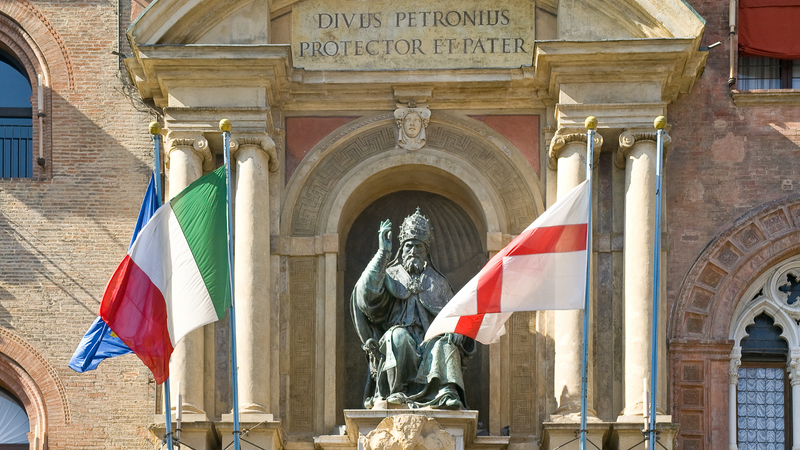Check your calendars! Scroll back to October 1582 calendar, and it will astonish you. It took everyone by surprise when someone discovered that this month has 10 days less! Calendars are supposed to be the one constant things in our lives, but turns out they are not. The entire internet went into a frenzy with the Twitter audience especially talking about how baffling it all is. What caused a month to have fewer days than usual was a mystery to many. Keep reading to find out what really happened.
As usual, Twitter was one of the first places where this matter was brought up. The month of October 1582 in the calendar had 10 days missing. You start counting the date and it jumps to the 15th after the 4th of the 182 October calendar. Strange, right? If you think this is all a joke, scroll down your calendars and then come back to know why it actually happened. Ready? So this is how it goes.
It’s confusing to see an abnormal month in the calendar. You might think something is wrong with your phone or the calendar app. However, the ‘glitch’ has been the same across all operating systems and multiple calendar apps. The 1582 October calendar makes you question everything, right?
Why were 10 days missing in the 1582 calendar?
Someone shared a tweet saying, “like if they can drop ten days from October 1582, we can go ahead and delete feb 14th altogether ” Who wouldn’t want to? Someone else tweeted, “Sex is cool but have you seen the October 1582 calendar yet?”
What caused this glitch that made the world have an existential crisis? Surely, it couldn’t have been that these ten days just disappeared off of the calendar and so did people’s memories about them. Nobody wants to believe that this has something to do with aliens or scientists.
The answer is simple. It was Neil deGrasse Tyson, the famous astrophysicist and science communicator, who put the world out of its misery.
In a tweet, he said, “By 1582, the Julian calendar, with a Leap Day every four years, had accumulated TEN extra days relative to Earth’s orbit. So Pope Gregory jump-started his new and exquisitely accurate calendar by cancelling 10 days that year, in which October 4 was followed by October 15.”
This makes sense, but what still doesn’t is why it was just the October 1582 calendar. Why didn’t they cut out one day from each month or something? There could have been so many ways of taking out 10 days from the calendar. So despite Neil deGrasse Tyson’s tweet, the Twitterati was still confused.
Between the years 1562 to 1563, there was a decree passed that asked the pope to make reforms to the calendar. These reforms were needed in order to make calculating the date for Easter easier. The increasing complications to fix a date every year were starting to get frustrating. The decision to pass a decree was passed by the Council of Trent in the same time period. However, it wasn’t until 20 years later that some action could be taken to make this reform.

The pope found a suitable fix to make reforms to the October 1582 calendar. In 1582, Pope Gregory XIII signed a papal bull, a document that serves as an official edict from the pope. This was done in February, promulgating a new and changed calendar that would be known as the Gregorian Calendar.
This new calendar was created introducing a revised way to calculate the leap years. The official new year was proposed to be January 1 instead of March 25 of the older Julian calendar. However, between 1582 and 1752 there were two calendars being used in Europe. England also witnesses people using two different dates to mark the start of the year. Despite January 1 being the reformed date, the legally accepted start date was still March 25.
For a while, Europe and its colonies started using double dating to avoid any discrepancies. These were marked with a slash mark ‘/’. So instead of writing May 10, 1600, they would either write May 10, 1600/01 or May 10, 1600-01. Finally, in 1750, an act of the Parliament was passed in England which made it compulsory to accept the new Gregorian calendar in 1752. However, by this time England and its colonies had already lost 11 days as compared to the rest of Europe.
So while it was 11 March 1752 in the rest of Europe, it was still 01 March 1752 in Europe. So to make up for this gap, the English calendar dropped 10 days in September 1752.
However, when the change was initially made in the 1582 October calendar, the designers had to drop 10 days from their own calendars. They chose October because it was one of the most unimportant months of the year. This way, they wouldn’t lose out on important holidays or festivals. The goal was to bring back the vernal equinox from March 11 to March 21.
Just like England, not all countries made this change immediately. While Austria, Spain, Portugal, Polan, Germany and Italy were all ahead in time compared to the rest of Europe, France only followed suit in December.
Hope this solves all your confusion. We know it helped us!
Disclaimer: The details mentioned throughout this blog are sourced from publicly accessible platforms. At Zeezest, we intend to share factual and verified information. Should there be any inconsistencies or variances in the information provided, please understand that these are entirely unintentional and not meant to mislead.




